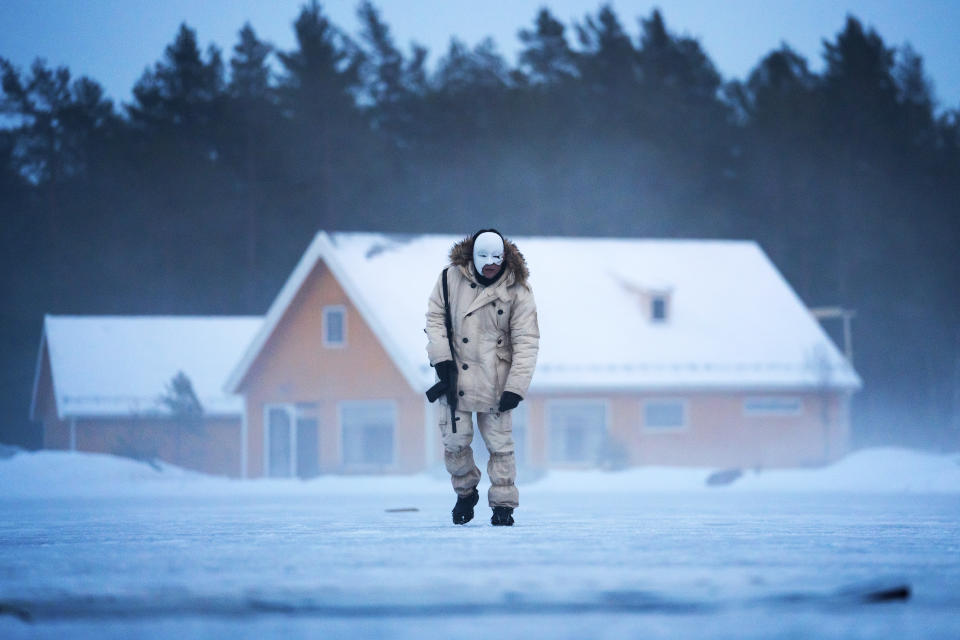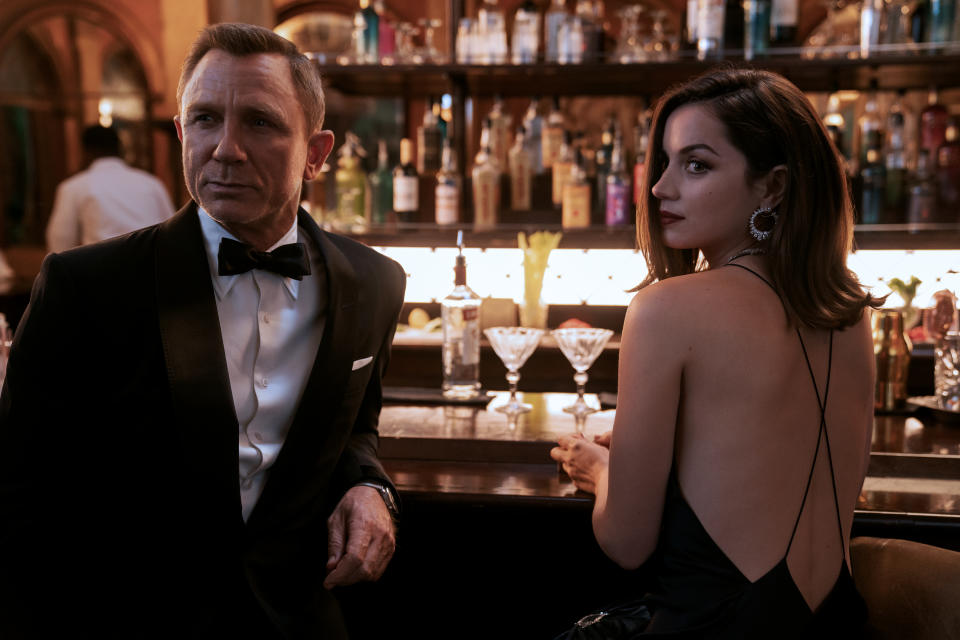‘No Time to Die’: Why the Pre-Credit Teaser Was Essential to Daniel Craig’s Swan Song as James Bond

- Oops!Something went wrong.Please try again later.
- Oops!Something went wrong.Please try again later.
- Oops!Something went wrong.Please try again later.
- Oops!Something went wrong.Please try again later.
Daniel Craig’s James Bond quintology was a brilliant juggling act of maintaining and subverting franchise conventions, especially in exploring a first-time journey for 007. Thus, the challenge for “No Time to Die” director Cary Joji Fukunaga was completing Bond’s arc. And his catalyst was revisiting the ghosts of the past from “Casino Royale” and “On Her Majesty’s Secret Service.” [SPOILER ALERT!] But, of course, with the ironic twist of killing Bond.
Yet that meant setting up “No Time to Die” with both of these tragic love story threads in the longest and most daring pre-credit teaser in franchise history. It’s a 20-minute tour de force that begins with a frozen horror encounter in Norway between young Madeleine (Coline Defaud) and baddie Safin (Rami Malek); jumping to present-day Italy with the “We Have All the Time in the World” romance of Bond and Madeleine (Léa Seydoux); followed by betrayal at the tomb of Vesper (Eva Green); two thrilling chases through the narrow alleys of Matera; Bond and Madeleine finally escaping a furious shootout with Spectre in the trusty Aston Martin DB5; and then Bond saying goodbye to Madeleine at the train station.
More from IndieWire
'Dune': How Composer Hans Zimmer Invented a Retro-Future Musical Sound for the Arrakis Desert Planet
'Halloween' Killed but 'The Last Duel' Is Dead as 'No Time to Die' Lives On
But for editors Tom Cross (the Oscar-winning “Whiplash”) and Elliot Graham (the Oscar-nominated “Milk”), keeping the pre-credit teaser intact was of the utmost importance in protecting Fukunaga’s vision, especially in beating back worries about kicking off with the Norway sequence without the presence of Bond (only the fourth time in franchise history).

Christopher Raphael
“Elliot and I were always concerned that the powers that be were going to have us get rid of the Norway story,” said Cross. “Or that they have us move it. We knew that we were always fighting length. and once you got into the action, you had to tell that story because it was so braided with the Madeleine betrayal [“She’s the daughter of Spectre”]. You had to take it all the way. What we called the ‘Donut square’ with the Aston Martin could’ve ended the pre-title and pick up at the train station after, but it felt like we needed to break when [Bond] broke off his relationship with Madeleine.”
Added Graham, who previously worked with Fukunaga on “Beasts of No Nation” and a Levis commercial: “We all asked a question at some point: Can it be a flashback? Can it be intercut? But very quickly we went, nope. One of the things Cary’s famous for is trying to get as much story in there as possible. The story and emotion always are going to come first, not pacing.”
Plus, Fukunaga was adamant about establishing surprise and disorientation from the outset, given the gut punch that throws Bond off balance in the pre-credit teaser. “The thing we always loved about not seeing Bond for such an extended period was that people were going to think: What movie are we watching?,” Cross continued. “But we knew we were on the same page as Cary, and ultimately the producers and [MGM] stood by it because they all realized how important it was to the story.”

MGM
Also innovative: the pre-credit teaser introduced temporal complexity. “Bond movies have always been epic in scope, but this movie is also epic in time,” said Cross. “And that was something that was always in the script: Start with a time period and get the audience thinking, go to a second time period, which picks up shortly after ‘Spectre’ end, and then after the main title sequence, jump five years later. This is a Bond movie that travels longer in time than any previous one.”
It was all part of Fukunaga’s strategy of making Craig’s swan song an opulent-looking romantic adventure (shot by Linus Sandgren on both Kodak 35mm and 65mm film, and with action filmed in IMAX). The director continued to humanize Bond, making sure there was always an emotional connection to every moment, including the visceral action, when, for instance, he takes time out during the fight in Cuba to have a drink with CIA agent Paloma (Ana de Armas).
Unfortunately, the most trouble-plagued Bond production (with Fukunaga replacing Danny Boyle and doing a full rewrite) was further blindsided when Craig injured his ankle early in Jamaica and was out of commission for several weeks. “There was a mad rush to juggle things around in the schedule,” Cross said. “That meant they moved scenes in M’s [Ralph Fiennes] office up earlier in the schedule, and, in some cases, they shot 2nd unit before main unit, and that’s very challenging. The Cuba action set piece [shot on sets in Pinewood] was drawn out for months. You have a scene that you can’t polish and finish. It just has little pieces trickle in, and, in one way, it’s great, because you can affect the new pieces coming in, but, on the other hand, it’s also very difficult to see the forest through the trees.”

Nicola Dove
While they began shooting with a full script, certain scenes evolved and got clarified, particularly the complicated Heracles plot involving Safin’s DNA-targeted bio-weapon of mass destruction. That’s something the two editors continued working on together almost until the end, incorporating last-minute VFX graphics associated with exposition from Q (Ben Whishaw).
“Cary’s going to give you as little info as you possibly need,” said Graham. “He doesn’t want to guide you, particularly. He doesn’t want to give a lot of exposition, just enough not to be confused and to pull it along. That’s a delicate balance that we certainly worked on: the least amount that you need to follow.”
As for “No Time to Die” boasting the longest Bond running time of 163 minutes, that too was part of Fukunaga’s strategy to give as much time as needed to complete Craig’s arc as Bond. “Ours wasn’t about the plot in the same way [as the other Craig movies],” Graham added. “It was about his journey coming full circle, not his conflict with the villain. It refocuses the viewer a little bit.”
And the one aspect that remained untouchable, as scripted, was the ending. “It was never in doubt and there were no alternatives,” said Cross, who always had the epic love story of “On Her Majesty’s Secret Service” in the back of his mind.
Best of IndieWire
New Movies: Release Calendar for October 15, Plus Where to Watch the Latest Films
45 Directors Pick Favorite Horror Movies: Bong Joon Ho, Tarantino, del Toro and More
Sign up for Indiewire's Newsletter. For the latest news, follow us on Facebook, Twitter, and Instagram.


